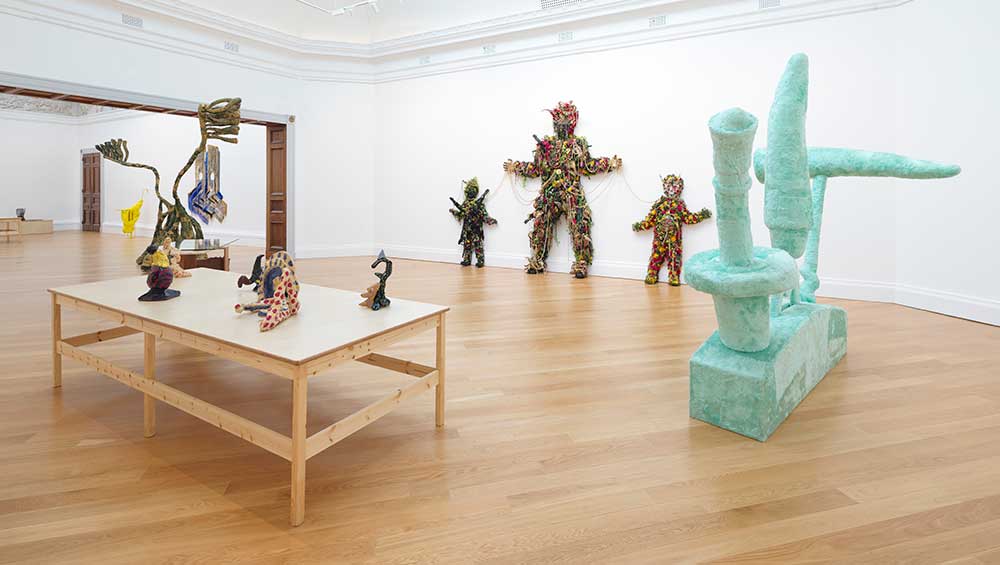
These Mad Hybrids: John Hoyland and Contemporary Sculpture, installation view, Royal West of England Academy, Bristol, 2024. Photo: Tim Bowditch.
Royal West of England Academy, Bristol
3 February – 12 May 2024
by DAVID TRIGG
“I enjoyed the freedom to try anything,” wrote the British artist John Hoyland (1934-2011) in 1994. He was not, however, referring to the dynamic abstract paintings for which he is best known, but an obscure collection of 25 ceramic sculptures that he made that year and exhibited only once. Described by Hoyland as “mad little hybrids”, these works brim with colour, humour and zoomorphic qualities, and, despite being an anomaly in his practice, reveal a sculptural way of thinking that evidently fed into his paintings. These spirited objects also appear remarkably contemporary, and by highlighting their affinity with current sculptural practice, this exhibition at the Royal West of England Academy (RWA) initiates a playful dialogue between them and works by 10 contemporary sculptors similarly characterised by hybridity.
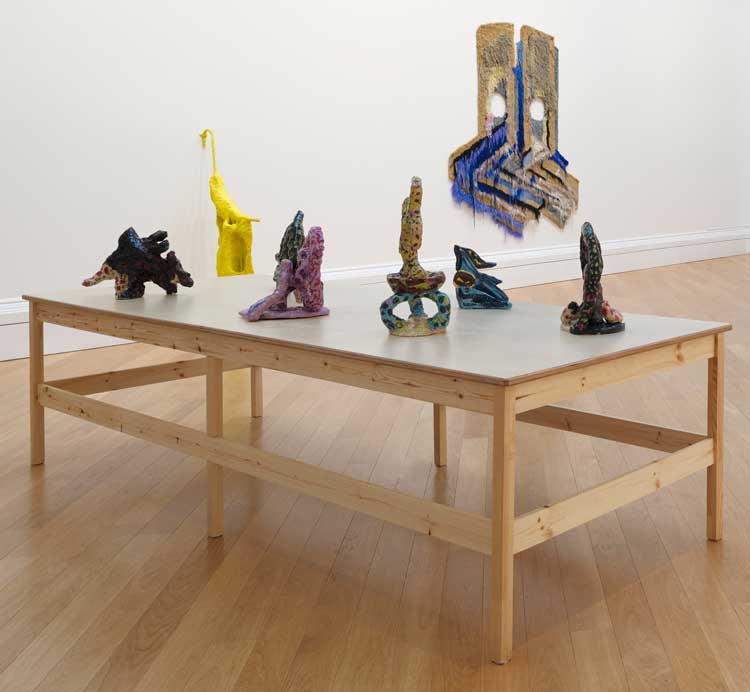
These Mad Hybrids: John Hoyland and Contemporary Sculpture, installation view, Royal West of England Academy, Bristol, 2024. Photo: Tim Bowditch.
Displayed on a table at the exhibition’s entrance are six of Hoyland’s ceramics. Some have snaking, serpentine forms, others have limb-like protrusions; one or two look like amorphous marine creatures or strange amoeboid organisms. Characterised by a carefree spirit, each one is roughly fashioned with little refinement and painted with colourful daubs, splodges and expressive applications of glaze.
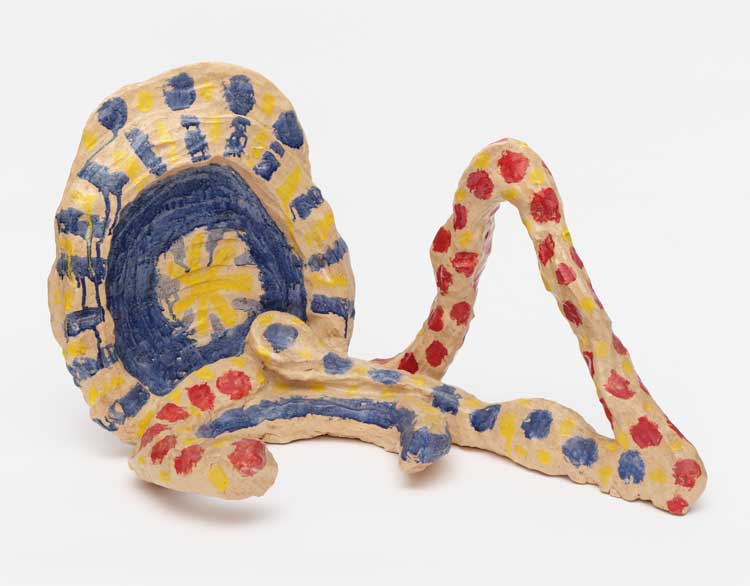
John Hoyland, The King, 1994. Glazed ceramic, 66 x 43 x 38 cm. © John Hoyland Estate. Photo: Tim Bowditch.
For years, these little-known works went largely unnoticed, being kept on custom-built shelves in the artist’s studio. It is therefore a rare treat to see them publicly displayed after so many years.
The temptation to touch is strong, such is the tactile allure of Hoyland’s hybrids. Nearby, seemingly welcoming viewers’ hands is How Do You Do (2019), a searing yellow sculpture by Olivia Bax, who has co-curated the exhibition with Sam Cornish and Wiz Patterson Kelly of the John Hoyland Estate.
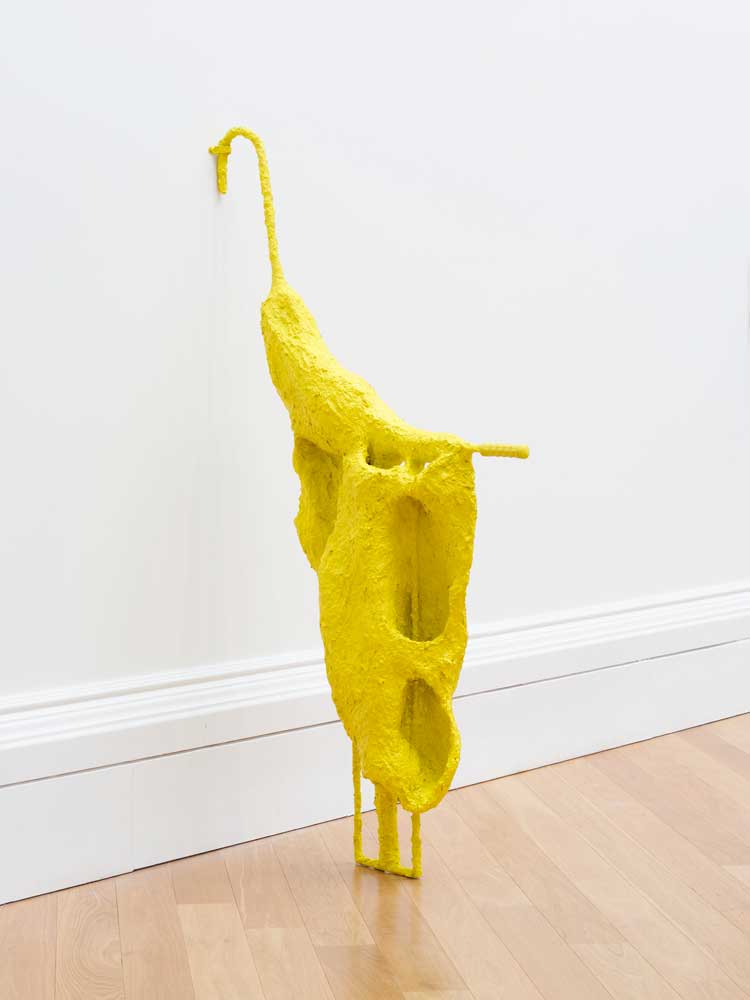
Olivia Bax, How Do You Do, 2019. Installation view, These Mad Hybrids: John Hoyland and Contemporary Sculpture, Royal West of England Academy, Bristol, 2024. Photo: Tim Bowditch.
Constructed from a concoction of shredded paper and household paint plastered over a metal armature, the work is secured to the wall at one end by a hook-like projection. At its other end, extending into the space like a hand offering an awkward greeting, is what looks like a bicycle handlebar. As with so many of the works here, it is a joyous and eccentric mishmash of materials and forms.
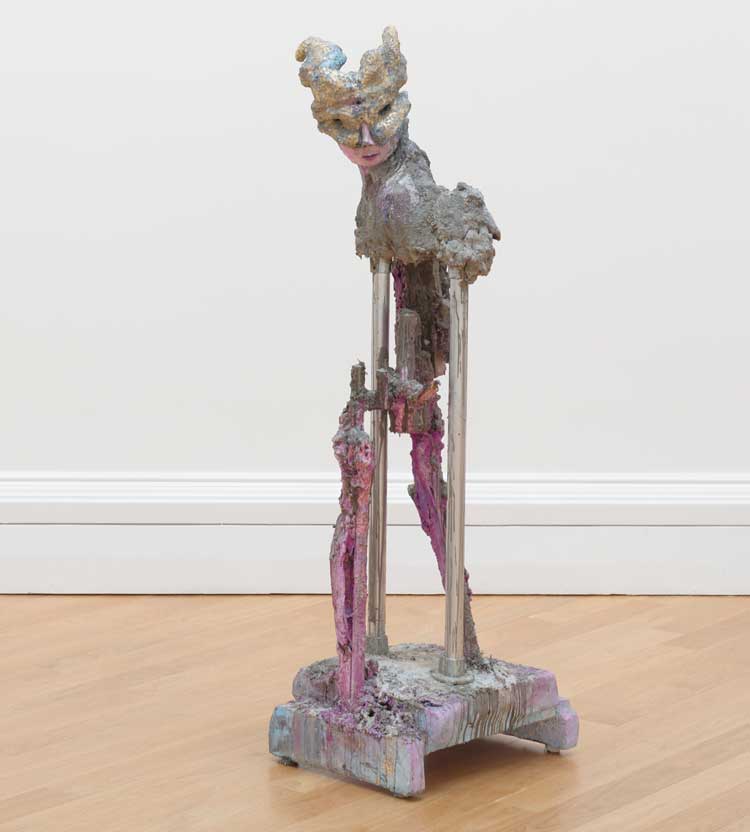
John Summers, High Ground, 2023. Installation view, These Mad Hybrids: John Hoyland and Contemporary Sculpture, Royal West of England Academy, Bristol, 2024. Photo: Tim Bowditch.
It is curious that in an exhibition inspired by ceramics, only one of the contemporary sculptors uses clay, and even then it is just one in a long list of materials. John Summers’ High Ground (2023) depicts a glistening masked figure emerging from a jumbled mass of plaster, cement, Jesmonite and air-drying clay. Looking like a futuristic ruin, the fragmented body is supported by scaffold poles and coloured with patches of glitter and imitation gold leaf that recall Hoyland’s gestural glazes.
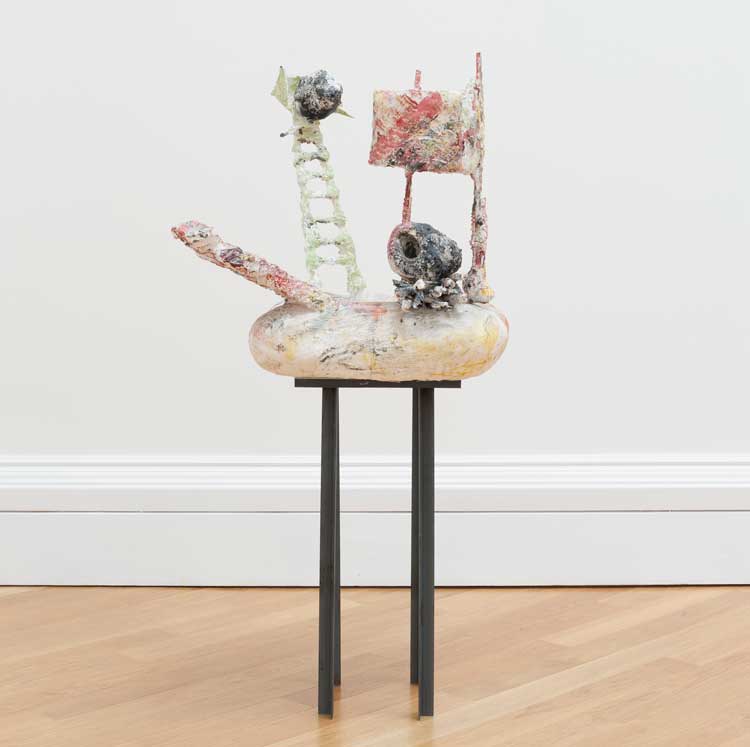
Phyllida Barlow, Untitled: Badplace; 2020 Lockdown, 2020. Installation view, These Mad Hybrids: John Hoyland and Contemporary Sculpture, Royal West of England Academy, Bristol, 2024. Photo: Tim Bowditch.
The rough-and-ready qualities of Hoyland’s hybrids are echoed by Phyllida Barlow’s Untitled: Badplace; 2020 Lockdown (2020). Created during the Covid-19 pandemic, this idiosyncratic work comprises several distinct elements that together form a kind of dreamlike mise en scène, featuring what appears be a boulder perched on a ladder, a pile of sticks weighted down by a rock and other slab-like forms all slathered with paint and balanced on steel legs.
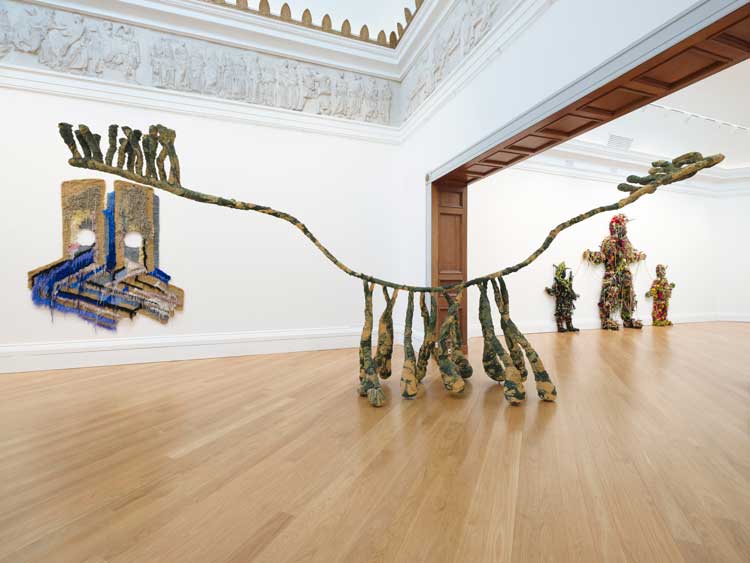
Andrew Sabin, From Time to Time, 2018. Installation view, These Mad Hybrids: John Hoyland and Contemporary Sculpture, Royal West of England Academy, Bristol, 2024. Photo: Tim Bowditch.
Adjacent to this is Andrew Sabin’s equally curious From Time to Time (2018), a large and sprawling polyurethane sculpture with multiple legs and spindly, tentacle-like outgrowths. Its organic forms are created, bizarrely, from moulds using margarine, an unpredictable casting process with highly textured results that, in this instance, resemble butter icing.
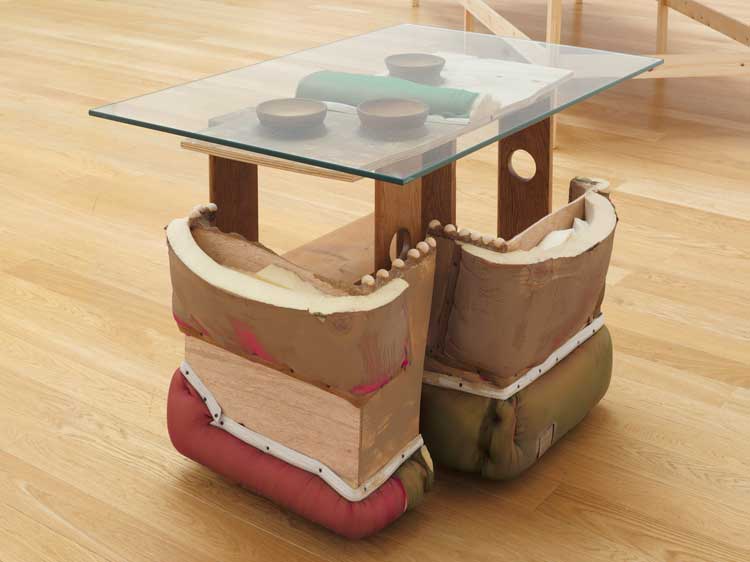
Jessi Reaves, Three Bowl Table, 2019. Installation view, These Mad Hybrids: John Hoyland and Contemporary Sculpture, Royal West of England Academy, Bristol, 2024. Photo: Tim Bowditch.
Hybridity comes to the fore in Jessi Reaves’ Three Bowl Table (2019), in which items of furniture have apparently been spliced, diced and mashed together to form the base for a glass tabletop; sandwiched between these are three wooden bowls, visible through the transparent material. Here, functional objects are made useless, alluding to the condition of sculpture as an intrinsically functionless medium.
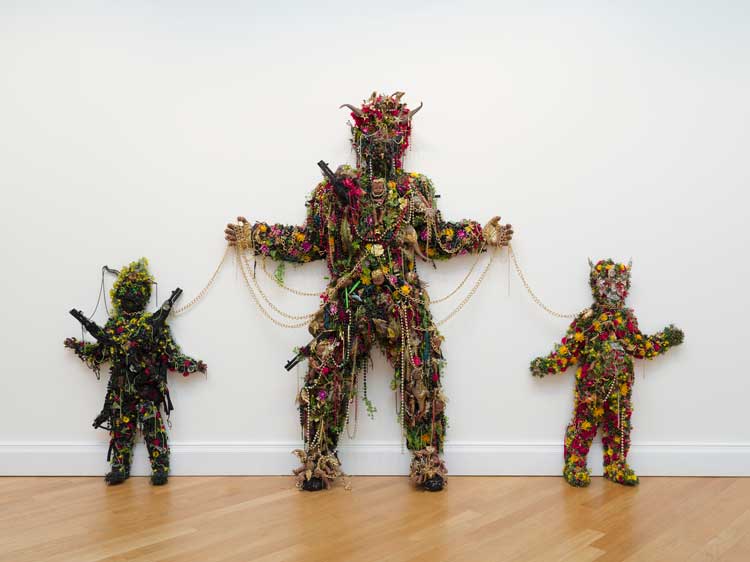
Hew Locke, The Kingdom of the Blind #5 #6 & #7, 2008. Installation view, These Mad Hybrids: John Hoyland and Contemporary Sculpture, Royal West of England Academy, Bristol, 2024. Photo: Tim Bowditch.
An abundance of consumer goods and ephemera is similarly sacrificed for Hew Locke’s The Kingdom of the Blind #5 #6 & #7 (2008), in which plastic dinosaurs, artificial flowers, dolls, beaded necklaces and toy Kalashnikovs coalesce into totemic figures in relief: a mythical king connected to two of his subjects by golden chains. This flamboyant installation is something of an outlier, laden as it is with themes of political power and cultural identity.
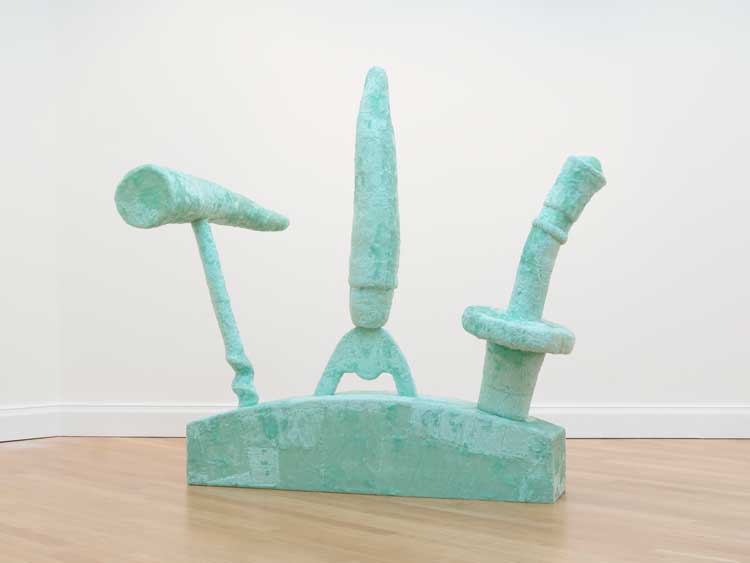
Eric Bainbridge, Made in Hong Kong, 1987. Installation view, These Mad Hybrids: John Hoyland and Contemporary Sculpture, Royal West of England Academy, Bristol, 2024. Photo: Tim Bowditch.
Conversely, humour is found in Eric Bainbridge’s Made in Hong Kong (1987), a monumental representation of a corkscrew, bottle opener and cork, clad with bright-blue fur. As the earliest sculpture in the show, made several years before Hoyland turned his hand to ceramics, its presence is intriguing. Poking fun at the pomposity of modernist gestures, it reflects something of the postmodern milieu of the late 1980s, the spirit of which oozes from Hoyland’s jaunty hybrids as well as many of his paintings of the period.
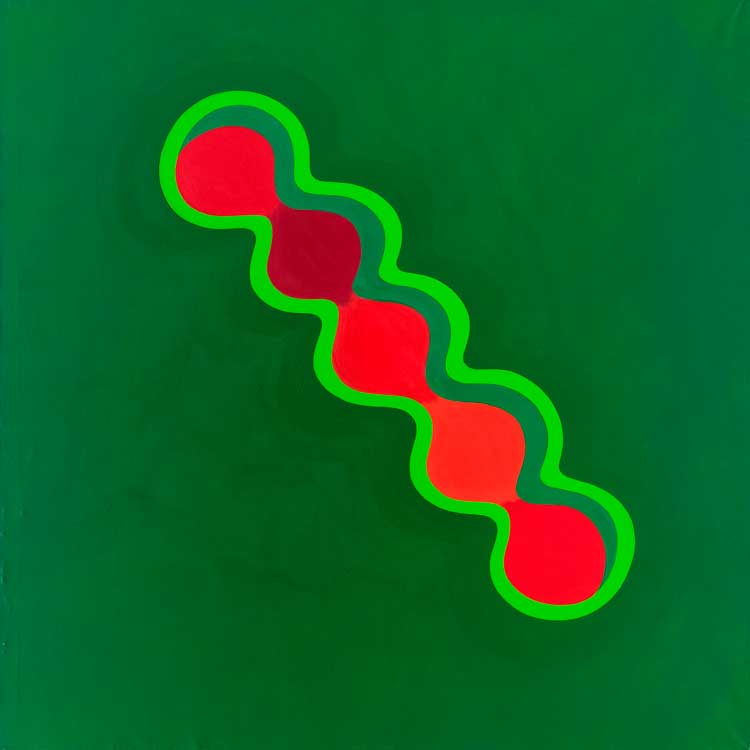
John Hoyland, 20.10.63, 1963. Acrylic on canvas, 172.7 x 172.7 cm (68 x 68 in). © John Hoyland Estate.
Beyond another table of Hoyland’s ceramics, in the RWA’s dimly lit side galleries, is a selection of his paintings from the 1960s to the 2010s. Feeling like a separate exhibition, these canvases reveal the importance of sculptural forms and ideas across his practice. Images of objects often functioned as prompts for early paintings, such as the 1963 composition 20.10.63, the bulging abstract shapes of which relate to an illustration of a Chinese vase pinned to his studio wall. Nearby, the tendril-like forms of 25.6.66 (1966) reflect an interest in the horizontal sculptures that Anthony Caro was making at the time.
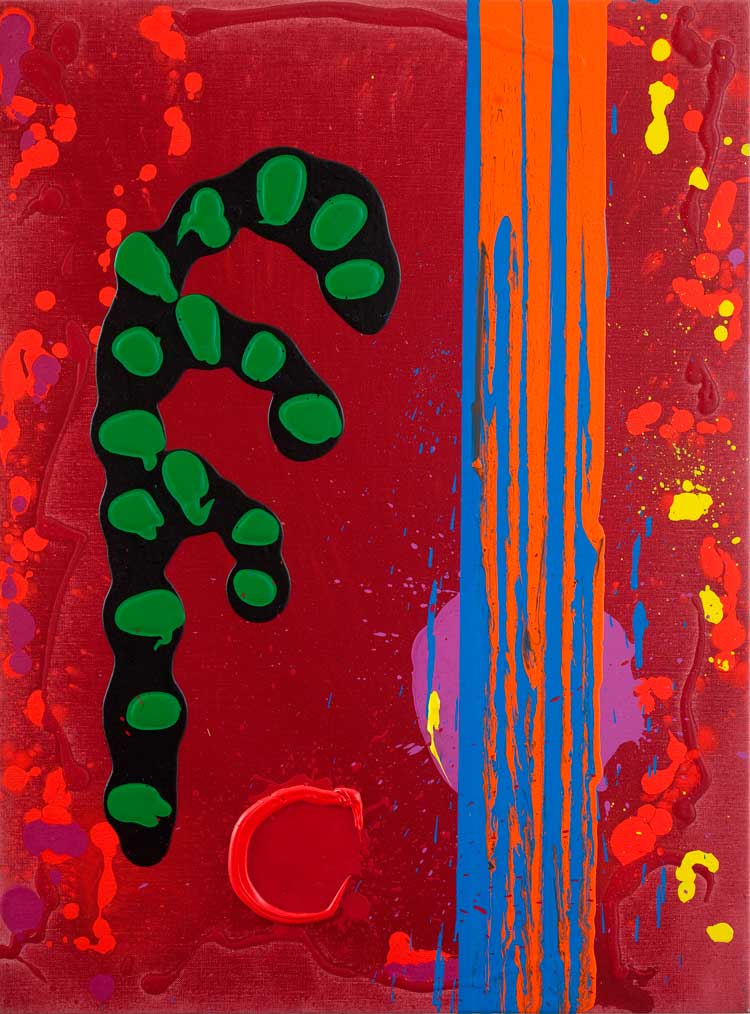
John Hoyland, Poem for Wine & Stars, 17.5.99, 1999. Acrylic on canvas, 71.7 x 61 cm (31 x 24 in). © John Hoyland Estate.
Later works seem more closely aligned with the language of sculpture. Indeed, the physicality of paint comes to the fore in Poem for Wine & Stars 17.5.99 (1999) and River Tales 5.8.99 (1999), both of which feature thick applications of vivid acrylic that create a relief surface. The latter of these is a direct response to a carved African sculpture that Hoyland owned. An anarchic energy is felt in several works, including Arvak 19.4.93 (1993), which shares resonances with many of the sculptural ceramic forms he created the following year.
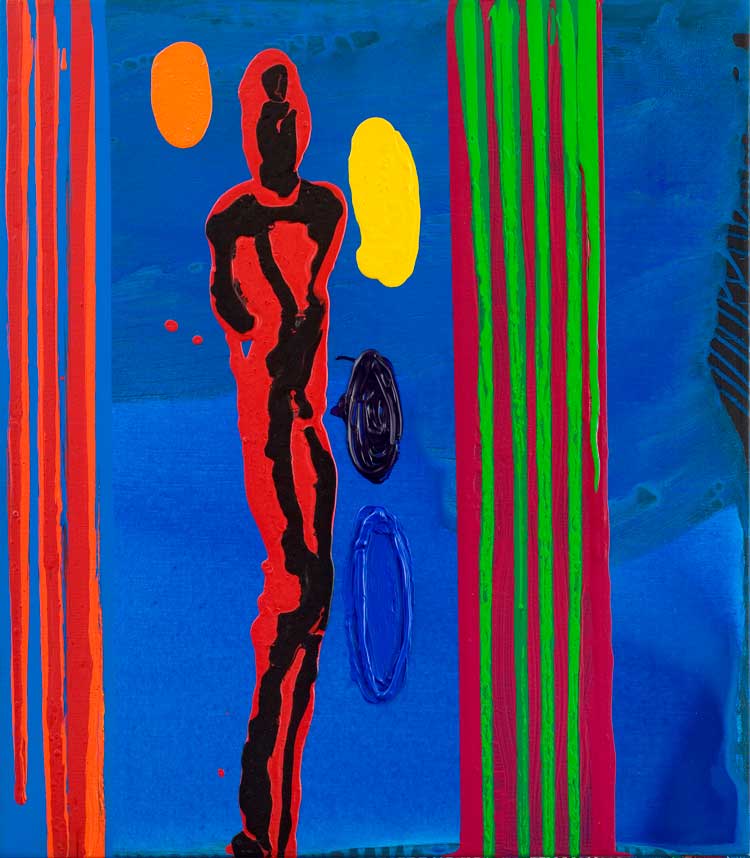
John Hoyland, River Tales 5.8.99, 1999. Acrylic on canvas, 80 x 70 cm (31.5 x 27.5 in). © John Hoyland Estate.
These Mad Hybrids could easily have become a superficial exercise in visual similitude. Instead, it is a rich and playful show that provides a space to reflect on the liberating potential of sculptural hybridity and the creative interconnection between two- and three-dimensional practice.